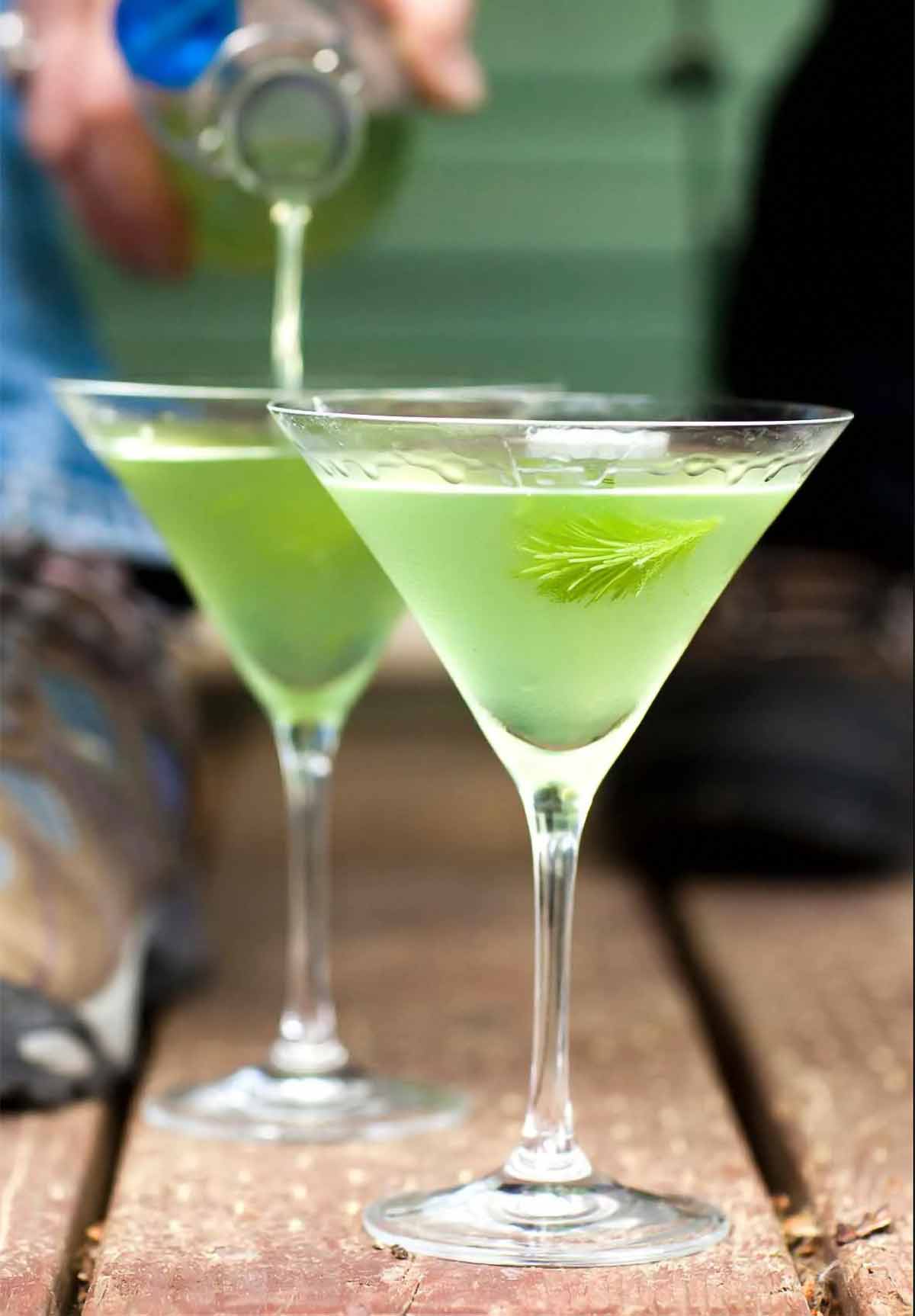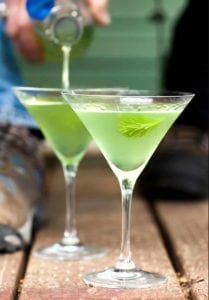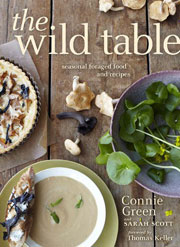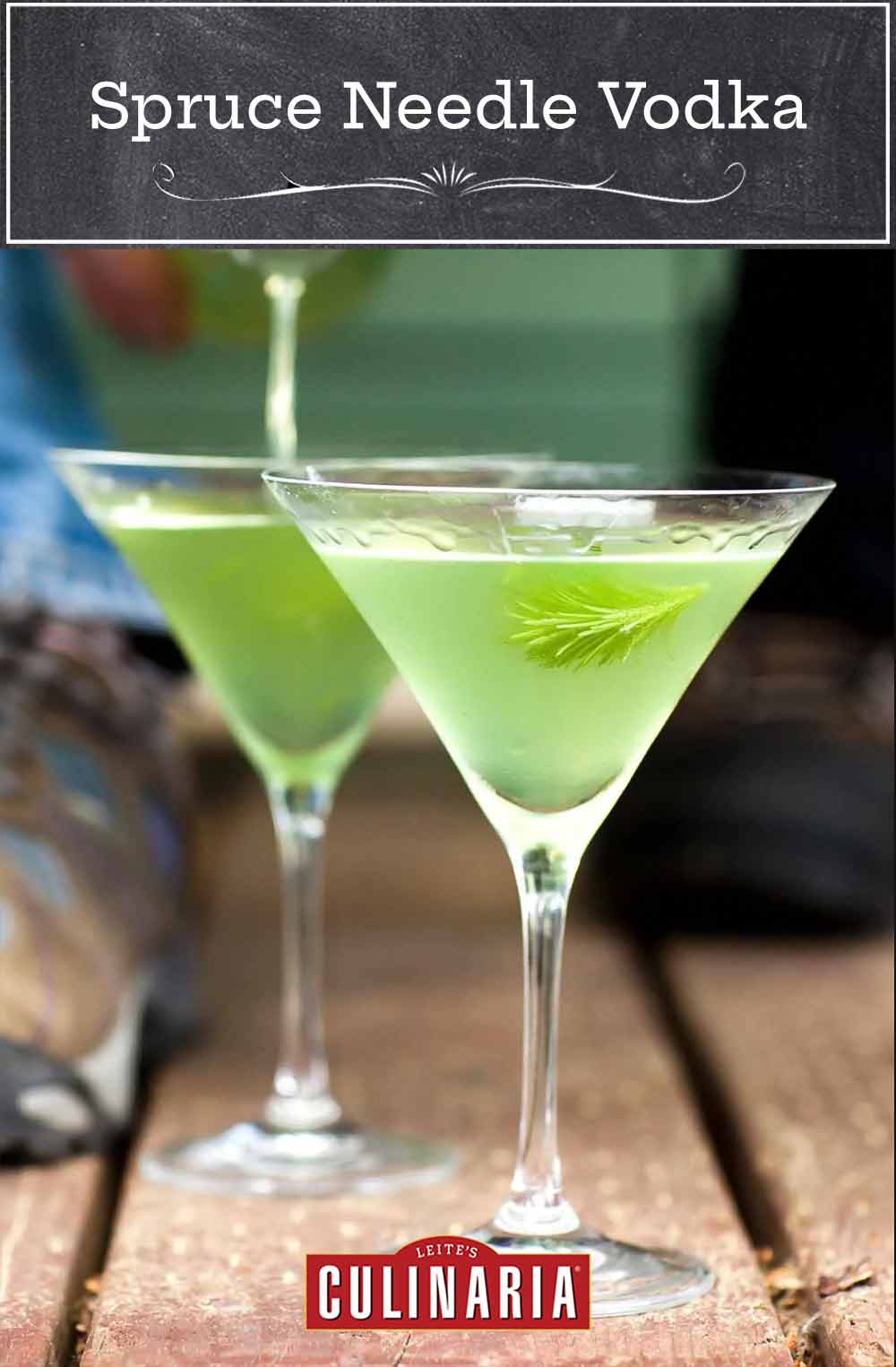
This spruce needle vodka is essentially just vodka infused with Christmas tree. The piney potable draws rave reviews from folks who’ve tried it and will make you want to hum along to “O Tannenbaum” as you knock some back. Simply pour the piney potable into a chilled martini glass and float a fresh, tender tip of your Christmas tree branch atop or bottle it up and gift it to the person who has everything.–Connie Green and Sarah Scott
What’s the difference between spruce, fir, and pine?
While we’re on the topic of tannenbaums, the type of tree you pluck a sprig from will make a profound difference in the final spirit. So as not to go overboard with a resinous smack, stick with spruce or Douglas fir, preferably one from a local tree, rather than pine. And ask whether the tree was sprayed–you want one that wasn’t. Oh, and just to state the obvious, opt for a vodka you wouldn’t mind sipping straight up.

Spruce Needle Vodka
Ingredients
- 1 cup spruce or Douglas fir needles, stripped from the branches
- One (26-ounce) bottle vodka
- Tender tips of the branches, for garnish (optional, but so very festive)
Instructions
- Place the spruce or fir needles and 1/3 of the vodka in a blender. Blend at high speed for 2 minutes. Pour into a large, clean jar or bowl.
- Pour the remaining vodka into the blender jar and swirl it around to gather any green residue on the sides and bottom. Pour this into the needle-infused vodka and stir to combine. Cover the jar or pour the vodka back into its original bottle and seal. Refrigerate for 1 week.
- Strain the vodka mixture, discarding the solid pine mass. Strain the vodka again through a coffee filter or cheesecloth and then pour the vodka into a clean bottle. You can stash the emerald green elixir indefinitely in the freezer. (May be sorta nice to pull it out for a little Christmas in July, eh?)

Nutrition
Nutrition information is automatically calculated, so should only be used as an approximation.
Recipe Testers’ Reviews
Aside from the fact that this vodka is the easiest thing to make (it only took 10 minutes), the taste and smell are wonderful. I love vodka, and this spruce needle vodka was a huge hit at our house. I’ll make sure to always have this on hand.
This spruce needle vodka is wonderful—like the best of both vodka and gin! It’s easy and fun. I’m gifting bottles of this for Christmas!
We love infused spirits, so this spruce needle vodka recipe really intrigued me. I thought it would wind up either amazing or a total bust. Happily, it was really, really great. Aside from the fact that you may not be able to get fir needles yearround, it’s a super easy recipe. A week of steeping in the freezer with bits of our Christmas tree and the vodka was sharp, bracing, and redolent of the great outdoors.
I didn’t make a full batch because I was a little nervous about the outcome, but everyone who tried it was clamoring for more. It made a mean martini, and even mixed well with tonic and lime juice. I may make a few bottles before our tree is gone and keep them in the freezer to have all winter.












I picked up some branches at a local tree farm (we have an artificial tree). Before I did the infusion I decided to taste the needles. I’m glad I did as one tasted very bitter, but a longer needle varietal had a milder, lovely flavor. It’s infusing now–can’t wait to taste it this time…with the vodka!
Nice thinking, Liza. Curious to hear how you serve it, whether straight up or…
Let us know what you think. Liza.
Um, not to be stuffy or anything, but fir and spruce are different species. And they taste really different. Is this recipe better with new growth or does it matter? How about pine as opposed to fir or spruce?
Any recommendations on martini recipes using this?
As with one’s preference for vodka, one’s taste in Christmas trees is, we imagine, quite personal. I’m going to go out on a limb, ahem, and say that the author wasn’t trying to confuse matters by including several options but was good naturedly trying to offer as many varieties of tree as possible, given the variance in availability.
As to the actual flavors, those of you who’ve tried this concoction, which types of trees did you use and how would you characterize the flavor? Based on aromas, we’d expect a Douglas to be quite resinous, almost sweet, and exceptionally aromatic. It’s the classic Christmas tree, so bear that in mind when contemplating Douglas versus spruce. A pine tends to impart a slightly but not quite as Pinesol-y taste one might expect.
And as for for martin recommendations, we’re purists when it comes to martinis. Just the infused vodka and a wave of vermouth, if you must, suits our tastes just fine. We can, however see perhaps swapping a twist of lemon in place of the vermouth. Anyone else been experimenting?
I know this was written with the holidays in mind, but is there a preferred time of year to collect the spruce or doug fir needles? I’m wondering if the results differ noticeably, say from spring, summer, fall or winter collections. I guess the best way to find out is to make this throughout the year!